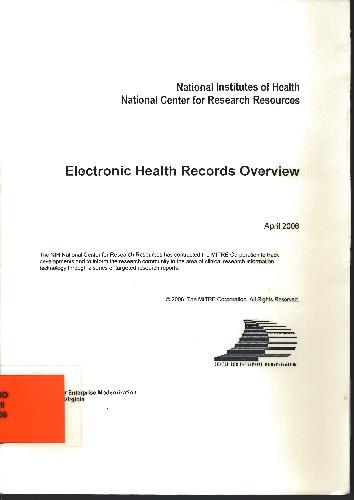Electronic health records overview
Electronic Health Records are electronic versions of patients' healthcare records. An electronic health record gathers, creates, and stores the health record electronically. The electronic health record has been slow to be adopted by healthcare providers. The federal government has recently passed legislation requiring the use of electronic records or face monetary penalties. The electronic health record will improve clinical documentation, quality, healthcare utilization tracking, billing and coding, and make health records portable. The core components of an electronic health record include administrative functions, computerized physician order entry, lab systems, radiology systems, pharmacy systems, and clinical documentation. HL7 is the standard communication protocol technology that an electronic health record utilizes. Implementation of software, hardware, and IT networks are important for a successful electronic health record project. The benefits of an electronic health record include a gain in healthcare efficiencies, large gains in quality and safety, and lower healthcare costs for consumers. Electronic health record challenges include costly software packages, system security, patient confidentiality, and unknown future government regulations. Future technologies for electronic health records include bar coding, radio-frequency identification, and speech recognition.
- No. Panggil
- Edisi April 2006
- Pengarang
- Penerbit Virginia National Institutes of Health National Center for 2006

